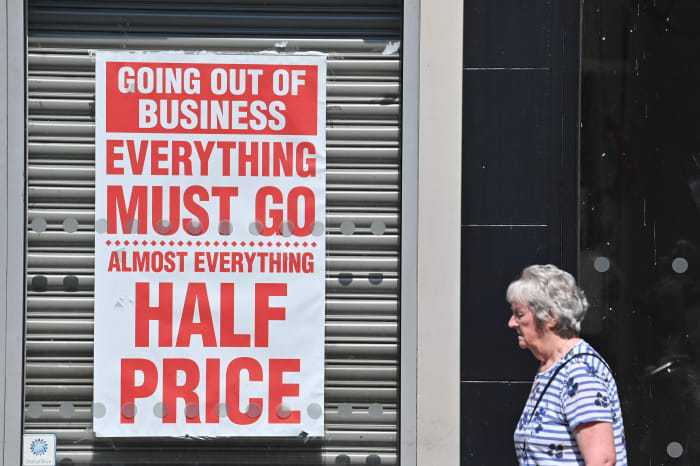A U.S. recession is still possible, economists say. They’re just not entirely sure when.
“I think that a gradual slowdown will still result in a recession,” said senior economist Ben Ayers of Nationwide. “The timing of this is highly difficult to pin down.”
Ayers is far from alone. Many Wall Street economists think a recession is more likely than not. They point to:
- More interest-rates increases by the Federal Reserve.
- Slowing business investment.
- A depressed housing market.
- A slump in the manufacturing sector.
- And ongoing strains in the banking system that could curb lending.
“I think a recession dynamic is underway,” said chief economist Steve Blitz of TS Lombard. “All the forces in play now will create a recession.”
There’s just this little business of when.
Recent surveys of economists suggest a downturn could now be a year or more away. Few expect one anytime soon, as used to be the case.
Key Words: Morgan Stanley credits ‘Bidenomics’ in lifting its U.S. economic-growth outlook
The economy is forecast to grow around 1.5% to 2% in the recently concluded second quarter. And early forecasts for the third quarter — from July to September — point to gross domestic product expanding at a similar pace.

Recession.
AFP via Getty Images
The earliest a downturn would likely start, based on the most recent Wall Street forecasts, is the final three months of 2023.
That’s what economists at the Conference Board predict. The board’s index of leading economic indicators fell in June for the 15th month in a row, a rare losing streak that in the past has always pointed to pending recession.
The last time the index suffered such a long string of declines was during the 2007-2009 Great Recession.
Many other economists think a recession before year end is far less likely, though.
Unemployment remains extremely low at 3.6%, they point out, and many companies are still hiring. Consumers are also spending at healthy levels, especially on leisure, travel and recreation, and propping up the large service side of the economy.
While higher borrowing costs have taken a bite out of the economy, the fence sitters say, households and businesses are still in good financial shape. That means they can continue to spend at levels that cushion the economy’s decline.
“When the starting point is strong balance sheets for households and businesses, tighter credit conditions won’t point to an economic slowdown as quickly,” said macro strategist Will Compernolle of FHN Financial.
So when is a recession most likely? Sometime by the middle of next year seems to be the best guess.
“The soonest we’d see a recession is in the first quarter [of 2024],” said Ayers. “The slowdown has been more gradual than we thought.”
Even then, few economists predict a deep recession like the one in 2007-2009. Blitz and Ayers see a short and shallow downturn, or even just a period of weak growth. The odds of a so-called soft landing — falling inflation and stable growth — are also on the rise.
Assuming inflation continues to slow toward the Fed’s 2% goal, that is. A big if.
The rate of inflation, using the central bank’s preferred core PCE price gauge, has been stuck between 4.5% to 5% this year.
Persistently high inflation, economists say, would virtually guarantee more rate increases than the Fed now plans. And all but guarantee a deeper and longer recession.
